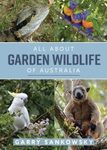About this book
Robert Pavlis, a gardener for over four decades, debunks common soil myths, explores the rhizosphere, and provides a personalized soil fertility improvement program in this three-part popular science guidebook. Healthy soil means thriving plants. Yet untangling the soil food web and optimizing your soil health is beyond most gardeners, many of whom lack an in-depth knowledge of the soil ecosystem. Soil Science for Gardeners is an accessible, science-based guide to understanding soil fertility and, in particular, the rhizosphere – the thin layer of liquid and soil surrounding plant roots, so vital to plant health.
Coverage includes:
- Soil biology and chemistry and how plants and soil interact
- Common soil health problems, including analyzing soil's fertility and plant nutrients
- The creation of a personalized plan for improving your soil fertility, including setting priorities and goals in a cost-effective, realistic time frame.
- Creating the optimal conditions for nature to do the heavy lifting of building soil fertility
Written for the home gardener, market gardener, and micro-farmer, Soil Science for Gardeners is packed with information to help you grow thriving plants.
Contents
Introduction
What Is Soil Health?
Using the Book
Terminology
SECTION 1: UNDERSTANDING SOIL
1. Soil Basics
Components of Soil
Origin of Soil
Soil Particles
Soil Texture
Importance of Particle Size
Air and Water
Aggregation and Soil Structure
Soil pH
2. Plant Nutrients
Ions
What Is Salt?
Movement of Nutrients in Soil
Essential Plant Nutrients
Micronutrients
Cation Exchange Capacity (CEC)
3. Soil Life
Energy Food Web
The Power of Large Molecules
Ratio of Fungi to Bacteria
Chemicals in the Soil
Pathogen Control
Identification of Microbes
4. Bacteria
What Do They Eat?
Where Do They Live?
Role in Disease Prevention
Ideal Environment
Role in Building Soil Aggregates
Conditions that Harm Bacteria
Nitrogen Fixation
5. Fungi
What Do They Eat?
Where Do They Live?
Fungi at War
Fungal Parasites
Mycorrhizal Fungi
6. Other Organisms
Actinomycetes
Algae
Protozoa
Nematodes
Arthropods
Earthworms
7. Organic Matter
Decomposition: Converting Dead Things into Humus
Truth About Humus
Too Much Organic Matter
Compost
Chelation
8. Rhizosphere
Root Exudates
Soil Enzymes
Effect of Desiccation
Soil pH Levels
Dynamic Microbe Population
Allelochemicals
Plants Are in Control
SECTION 2: SOLVING SOIL PROBLEMS
9. Identifying Soil Problems
Why Do We Fertilize?
Soil Testing
Plants as Indicators of Soil Problems
Plant Tissue Analysis
DIY Test Kits
Determining Soil Texture
Crusted Soil
Quantification of Microbes
Level of Organic Matter
Compaction
Hardpan
Drainage
10. Gardening Techniques That Affect Soil
Tilling
Working the Land
Mulching
Hoeing
Cover Crops
Raised Bed Gardening
Crop Rotation
Companion Planting
11. Solving Chemical Issues
Buffer Capacity
Increasing pH
Decreasing pH
Saline and Sodic Soils
Increasing CEC
Synthetic vs Organic Fertilizers
Understanding Fertilizers
Synthetic Fertilizers
Organic Fertilizers
Fad Products
12. Solving Microbe Issues
Inoculation
Solarization
Controlling Pathogens
Compost Tea
Best Practice for Increasing Microbe Populations
13. Increasing Organic Matter
Options for Adding Organic Matter
Cover Crops
Vermicompost
Bokashi Compost
Biochar
Biosolids
14. Dealing with Structural Problems
Compaction
Drainage Issues
Modifying Soil Texture
Clay Soils
Sandy Soils
SECTION 3: A PERSONALIZED PLAN FOR HEALTHY SOIL
15. Developing a Plan for Soil Health Improvement
16. How Detailed Should You Get?
17. Soil Health Assessment
Chemical Tests
Soil Sampling Instructions
18. Soil Health Action Plan
Soil Health Assessment
Action Plan
Action Plan Follow-up
Appendix A: Soil Health Assessment Form
Appendix B: Action Plan for the Year
Index
About the Author
About New Society Publishers
Customer Reviews
Biography
Robert Pavlis has been an avid gardener for over four decades. He is the owner and developer of Aspen Grove Gardens, a 6-acre botanical garden that features over 3,000 varieties of plants. Specializing in soil science, he has been an instructor for Landscape Ontario and is a garden blogger, writer, and chemist. The author of Building Natural Ponds, Pavlis is a well-known speaker whose audiences include Master Gardener groups, horticultural societies, orchid societies, and garden shows such as Canada Blooms and the FarmSmart conference. He teaches gardening fundamentals at the University of Guelph and garden design for the City of Guelph, Ontario, where he currently resides.


































